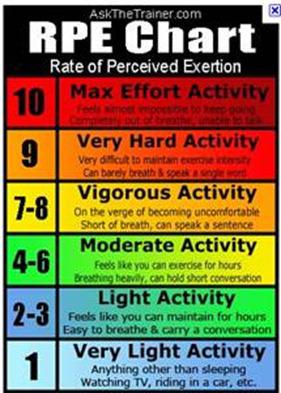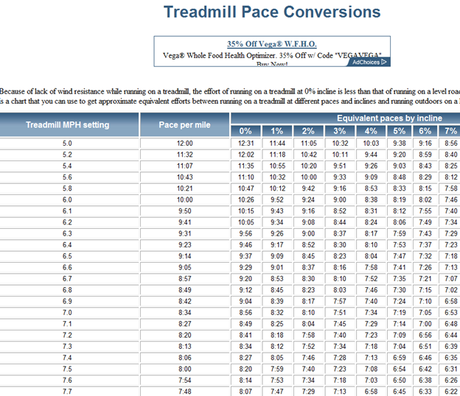Today I turned a corner. I turned a corner and there was the treadmill waiting for me, tempting me to do something I hadn’t been able to do for awhile.
HIIT - High Intensity Interval Training
I don’t love the treadmill. In fact, I give it the finger on a regularly basis. But, I think the treadmill is hands down the best place to do speed intervals because you can completely control pace and incline.
I haven’t HIIT it in at least a year and half because my body’s been out of whack. Ever since my femoral neck stress fracture (fancy way of saying hip stress fracture) in October 2010, I’ve had to put any kind of speed/interval training on the back burner. Every time I did speed work, it set me back. Today was the first day I really felt like my body was up for the challenge. The fact that I am finally here tells me that dedicating the past 10 weeks to changing some elements of my running form has really paid off.
The HIIT verdict? Invigorating and amazing. There is NOTHING like pushing yourself to the almost-puking, short-soaking, heart-racing edge. Honestly, when I was done I felt energized and giddy like s school girl.
What is HIIT?
HIIT alternates very intense bursts of anaerobic activity (running, biking, jump roping, rowing, etc.) with periods of aerobic recovery. The key to HIIT is that the intervals are at your maximum effort, not just an increased pace or heart rate.
HIIT is for anyone who wants to improve overall endurance and speed and to burn fat.
Why you should do it:
- Improves your VO2 max (your ability to utilize oxygen), thereby improving overall endurance
- Increases the amount of calories you burn during and after exercising because it increases the length of time it takes your body to recover from each exercise session
- Is a very intense workout for a shorter period of time (20-60 minutes max). That means if you normally start drinking beer at 10 a.m., you can start at 9:30 a.m.
- Effectively burns fat (two magical words in the English dictionary) by using fat stores as energy.
- Allows for fat, not muscle, loss
- Because the max effort intervals recruit fast twitch muscles, you can keep burning calories (after burn) for one to many hours post workout (depending on your fitness level and how hard you pushed).
- HIIT might increase your resting metabolic rate.
Note: “To get the benefits HIIT, you need to push yourself past the upper end of your aerobic zone and allow your body to replenish your anaerobic energy system during the recovery intervals" (source).
How to do it:
- Be ready to get the hell out of your comfort zone and to sweat!
- Play around with the treadmill to find out at what speed, incline or speed/combo incline you will be at a PRE (perceived rate of exertion) of a 9 or 10. Being at this effort is the key to HIIT. Don’t wuss out.

- Decide on your interval times. You can do an even ratio (1 minute max effort to 1 minute recovery), or make the recovery slightly longer. Intervals can be up to 4 minutes, but are usually much shorter (1 minute is common).
- Decide on how many repeats you will do. 6 to 10 is the norm.
- Warm up for at least 5 minutes before you shock the hell out of your body.
- If you like music while you run, this is the time to blast your best, loudest and most energizing playlist
- Take a deep breath, press the “increase speed” button on the treadmill, take a deep breath and and GO!
- NO HANDS ON THE TREADMILL. Try not to fall off. It would hurt. A lot.
- Initially, limit HIIT workouts to twice per week and space them 48 hours apart to let muscles recover, adapt and get stronger.
- Increase workouts to three times per week for optimal results
- Before you begin HIIT workouts, you should be able to exercise for 20-30 minutes at 70-85% of your estimated maximum heart rate.
- If you have any cardiovascular or other health problems or you are just starting a fitness program, don’t try this one yet. Not until your doctor clears you.
My Ball Bustin’ Workout:
5 minute warm up @ 6.5 mph
60 second burst @ 8.8 mph (6:49 min/mile pace)
90 second recovery @ 6.3 mph
Repeat 5 times
60 second burst @ 9.0 mph (6:39 min/mile pace)
90 second recovery @ 6.3 mph
Repeat 5 times
5 minute cool down at 6.5 mph
Total time: 33 ½ minutes
Total distance: 4 miles
I realize there are some people who run entire marathons 9.0 mph. The fact that I can hardly hang on for a minute at that pace makes me think that I am either very out of shape or those people are freaks of nature (I say that in the nicest way possible).
If you are trying to decide what incline and/or speed to do your intervals at, below is a nifty chart that shows you equivalent paces per treadmill incline increases. You can see the full chart HERE. Keep in mind that you can also do a fast walk for your recovery, you do not need to run or jog.

So, what’s the advantage of this type of workout for long distance runners who might take 3 to 5 hours to finish a marathon? My opinion is that HIIT should be used as a variation of your speed work in your training. HIIT may not be as specific for marathon training as say Yasso 800s, but it might help overall speed and endurance. Arguably, HIIT might be best utilized when training for 5K to half marathon distances, although I could not find a lot of research on this.
Have you incorporated HIIT workouts into your training? If so, have you noticed in improvement in your speed and endurance?
If not HIIT, what type of interval or speed work do you do? When marathon training, I typically stick to the Yasso 800s, because I’ve found them the most helpful with my race day performance.
SUAR
Sources for this post:
8 Benefits of High-Intensity Interval Training (HIIT)
High Intensity Interval Training
Treadmill Workouts Using High Intensity Intervals – HIIT
High Intensity Interval Training (HIIT) and Marathon

